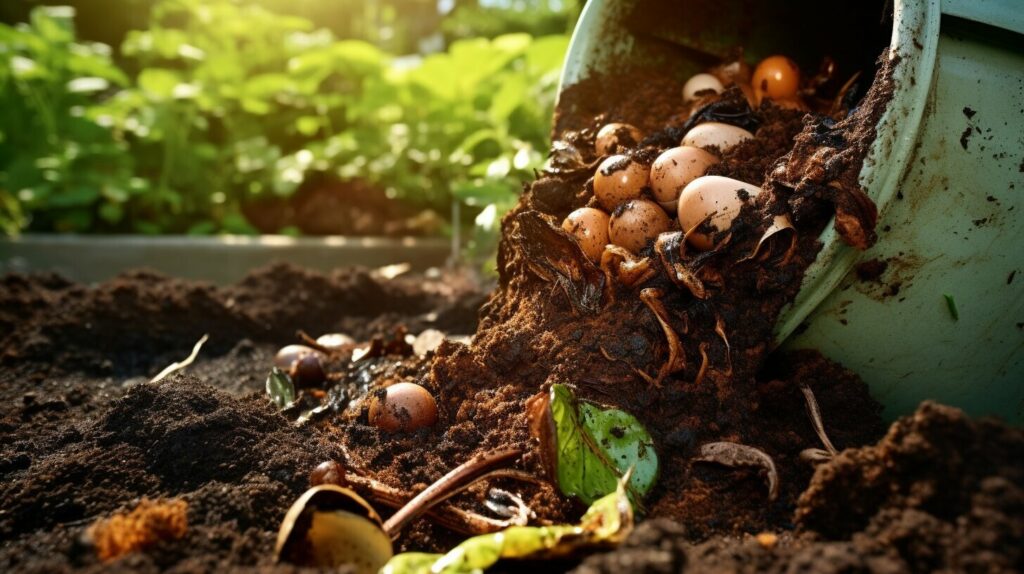Cold composting is a simple and effective way to transform your organic waste into nutrient-rich soil for your garden. By harnessing the power of microbial activity and decomposition, you can create a valuable compost pile that will enhance the health and fertility of your soil. With the right balance of moisture level, carbon to nitrogen ratio, and composting materials, you can easily master the art of cold composting.
What We Know:
- Cold composting is a method that doesn’t require heat or frequent turning of the compost pile.
- It relies on natural decomposition through microbial activity in the presence of oxygen.
- Organic waste materials are added to the compost pile and left to break down over time.
- Cold composting is suitable for beginners and those with limited space or time for composting.
- It offers minimal effort and maintenance compared to other methods of composting.
And after reading this article, check out our blog post on: Different Types Of Compost To Enrich Your Soil
Understanding Cold Composting
The composting process can be a bit confusing for beginners, but understanding the basics of cold composting is the first step towards successfully turning your organic waste into nutrient-rich soil. Cold composting is a method that relies on natural decomposition and microbial activity to break down organic waste materials. Unlike hot composting, which requires heat and frequent turning of the compost pile, cold composting is a more hands-off approach that is suitable for those with limited time or space for composting.
In cold composting, organic waste such as fruit and vegetable scraps, coffee grounds, and yard waste are added to a compost pile. Over time, microbial activity breaks down these materials, resulting in nutrient-rich compost that can be used to improve the health and fertility of your garden soil. The process is slower compared to hot composting, but it is easier to manage and requires less effort.
“Cold composting is a great option for beginners and anyone who wants to reduce their environmental impact. It allows you to recycle kitchen and yard waste into a valuable resource for your garden without the need for specialized equipment or turning the pile frequently.” – Gardening Expert
One of the key advantages of cold composting is its simplicity. You don’t need any fancy equipment or complicated techniques to get started. All you need is a designated composting area in your backyard or even a small bin on your balcony. By following a few basic principles, such as maintaining the right moisture level and carbon to nitrogen ratio, you can successfully create nutrient-rich compost through cold composting.
Benefits of Cold Composting
Cold composting offers several advantages over other methods of composting:
- Minimal effort and maintenance
- Natural breakdown of organic waste materials
- No risk of over-heating the compost pile or damaging beneficial microorganisms
- Easily manageable moisture level for optimal decomposition
With cold composting, you can easily turn your kitchen and yard waste into a valuable resource for your garden, contributing to a more sustainable lifestyle while improving the health of your soil.
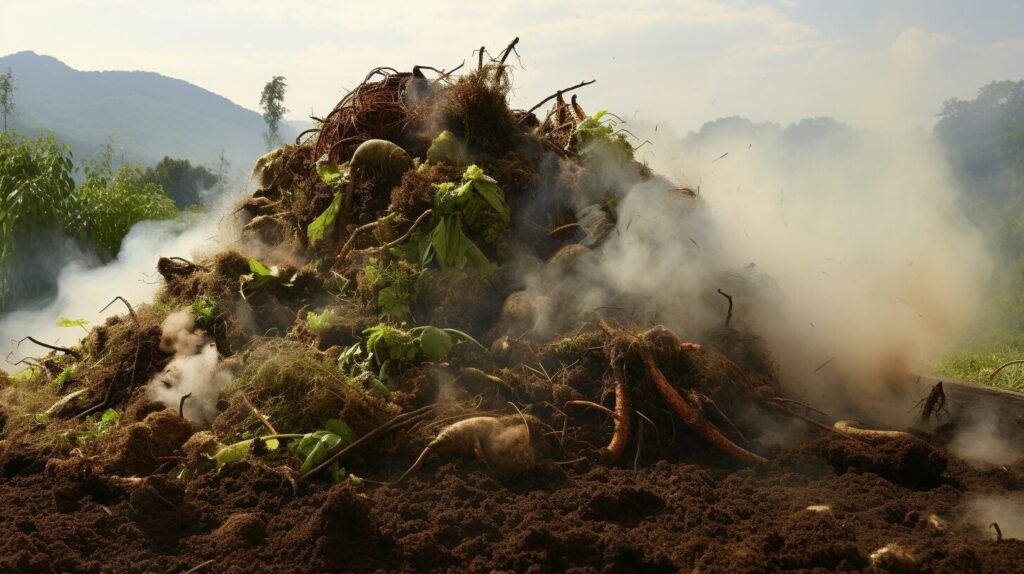
Pros of Cold Composting
Cold composting offers several advantages over other methods of composting. It requires minimal effort and maintenance compared to hot composting, making it more accessible for beginners. It also allows for the natural breakdown of organic waste materials, resulting in nutrient-rich soil that can improve the health and fertility of your garden.
Cold composting does not require the use of heat, which means there is no risk of over-heating the compost pile or damaging beneficial microorganisms. This makes it a safer option for those who are new to composting or have limited experience. Additionally, the moisture level in a cold compost pile can be easily managed to ensure optimal conditions for decomposition. This allows for a more controlled and efficient composting process.
In summary, the pros of cold composting include:
- Minimal effort and maintenance
- Natural breakdown of organic waste materials
- Production of nutrient-rich soil
- No risk of over-heating or damaging microorganisms
- Easily manageable moisture level
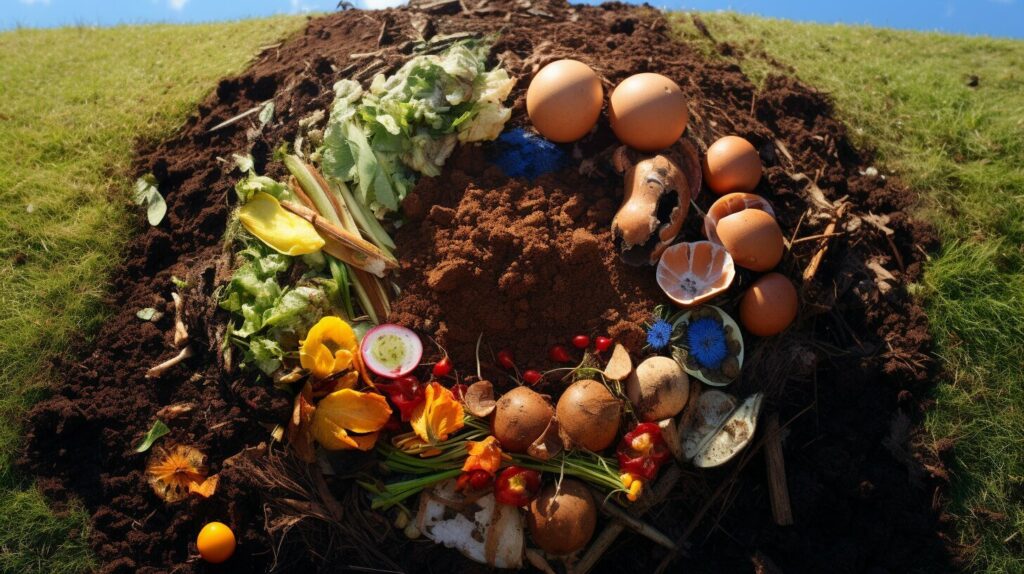
Table: Comparing Cold Composting to Hot Composting
| Cold Composting | Hot Composting | |
|---|---|---|
| Temperature | Does not require heat | Requires higher temperature (between 130-160°F) |
| Time to Decompose | Slower (several months to a year) | Faster (few weeks to a few months) |
| Effort and Maintenance | Minimal | Requires frequent turning and monitoring |
| Types of Materials | Accepts wide range of organic waste materials | Requires specific carbon to nitrogen ratio |
| Microorganisms | Natural breakdown by microbial activity | Reliant on specific thermophilic bacteria |
Cons of Cold Composting
Cold composting, while a beneficial method, does have some drawbacks that gardeners should be aware of. Here are a few cons to consider:
- Slow decomposition: Compared to hot composting, cold composting takes longer for organic waste materials to fully break down. This means that you may have to wait several months to a year before your compost is ready to use in your garden.
- Weed seeds: Without the high temperatures of hot composting, cold composting may not effectively kill weed seeds. This can result in the germination of weeds when you use the compost in your garden. To minimize this risk, it’s important to thoroughly weed your garden before applying cold compost.
- Pest attraction: Cold composting can attract pests, especially if the compost pile contains meat or dairy products. These items can be enticing to rodents and other animals. To prevent pest infestations, avoid adding meat or dairy products to your compost pile or use a closed container composting system.
By being aware of these cons, you can effectively manage and mitigate any challenges that may arise during your cold composting journey.
Solutions for Common Challenges in Cold Composting
While cold composting has its limitations, there are solutions to address these challenges:
- Accelerate decomposition: To speed up the decomposition process in cold composting, consider chopping or shredding the organic waste materials into smaller pieces. This increases the surface area for microbial activity, allowing for faster breakdown.
- Weed control: Regularly monitor your garden for weed growth and promptly remove any weeds that appear. Additionally, consider using compostable mulch or landscape fabric to suppress weed growth.
- Pest management: To prevent pests in your compost pile, avoid adding meat, dairy, and oily or buttery foods. If you’re concerned about pests, consider using a closed container composting system to keep animals out.
By implementing these solutions, you can overcome the cons of cold composting and enjoy the benefits of nutrient-rich compost for your garden.
With a clear understanding of the pros and cons of cold composting, you can make an informed decision about whether it is the right composting method for you and your gardening needs.
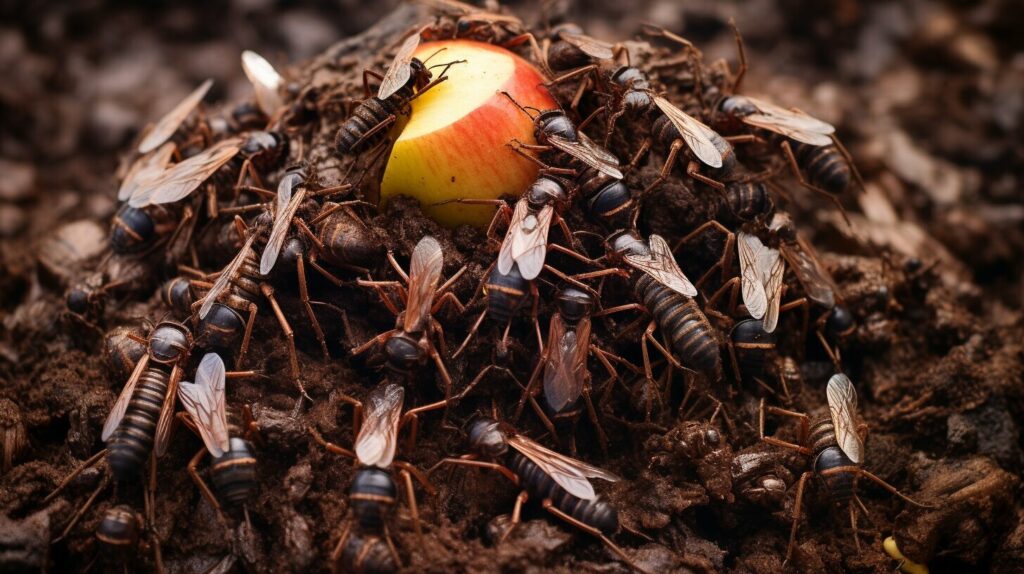
Your Cold Composting Journey
Embarking on a cold composting journey begins with setting up a compost pile in your backyard or designated composting area. Choosing a suitable location with good drainage and easy accessibility is key. Once you have your spot, you can start building your compost pile by layering it with a mixture of green and brown materials to maintain the right carbon to nitrogen ratio.
Green materials include fruit and vegetable scraps, coffee grounds, and fresh grass clippings, while brown materials consist of dried leaves, wood chips, and straw. It’s important to alternate between these materials to create a well-balanced compost pile.
To ensure the effectiveness of the composting process, regularly turn the pile to promote proper aeration and decomposition. This also helps in maintaining the moisture level of the compost pile, which should be kept damp but not saturated. Remember, a dry pile will decompose slowly, while a waterlogged pile may lead to anaerobic conditions and unpleasant odors.
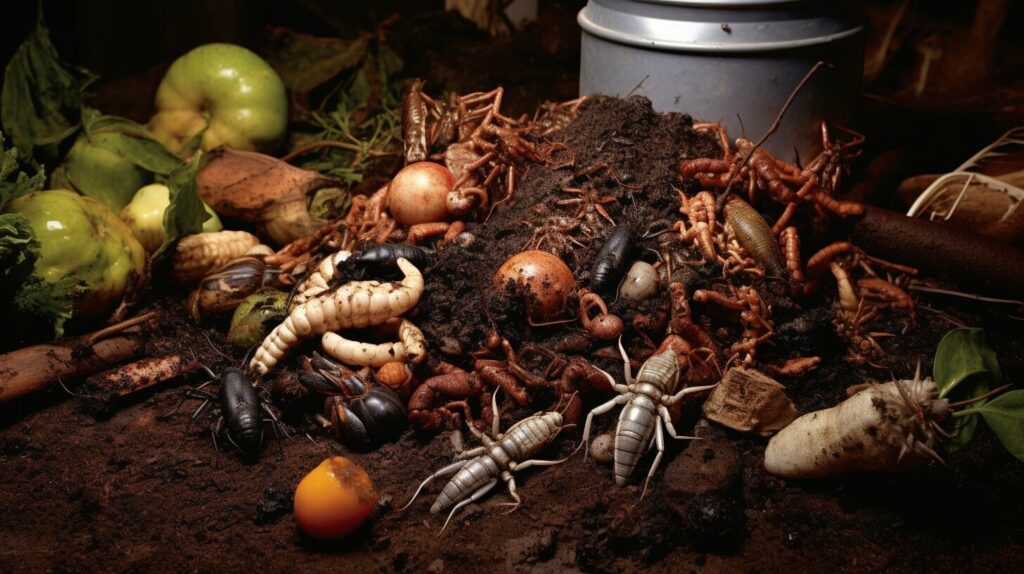
What Shouldn’t Go in Your Cold Compost Pile
While cold composting is a versatile and effective method for turning organic waste into nutrient-rich soil, there are certain items that should be avoided in your compost pile to ensure successful decomposition and avoid potential issues.
Meat and dairy products: These items can attract pests and slow down the composting process. Avoid adding leftover meat, bones, or dairy products to your cold compost pile.
Cooked food: Cooked food, such as leftovers or scraps, can lead to odors and attract unwanted animals. It is best to exclude cooked food from your compost pile.
Oily or buttery foods: Foods that contain excess oil or butter, such as salad dressings or greasy leftovers, should be avoided as they can interfere with the decomposition process and create an imbalanced compost pile.
Non-compostable materials: Be mindful of what you add to your cold compost pile. Avoid including items that are not suitable for home composting, such as plastic, metal, or synthetic materials. These will not break down and can contaminate your compost.
Table: Items to Avoid in Your Cold Compost Pile
| Item | Reason to Avoid |
|---|---|
| Meat and dairy products | Attracts pests and slows down decomposition |
| Cooked food | Can cause odors and attract unwanted animals |
| Oily or buttery foods | Interferes with decomposition process |
| Non-compostable materials | Does not break down and can contaminate compost |
By being selective about the materials you add to your cold compost pile, you can create a healthy and productive composting environment, leading to nutrient-rich soil that will benefit your garden. Remember to focus on organic waste materials that can easily decompose and avoid any items that may hinder the composting process.
Year Round Cold Composting
Cold composting is not limited to specific seasons and can be practiced year-round, including during the winter months. While the colder temperatures may slow down the decomposition process, with a few adjustments, you can continue composting even in colder climates.
One way to ensure year-round composting is to insulate your compost pile. This can be done by using materials such as straw, leaves, or a tarp to cover the pile and help retain heat. Insulation will help maintain a higher temperature within the compost pile, promoting microbial activity and decomposition.
Additionally, using smaller and chopped composting materials can help speed up the decomposition process during colder months. Smaller materials have a larger surface area, which allows for more efficient microbial breakdown. Chopping materials into smaller pieces before adding them to the compost pile can help accelerate decomposition.
Lastly, it’s important to monitor and adjust the moisture level of your compost pile during winter composting. Cold weather can cause excess moisture to freeze and slow down decomposition. Ensure that your compost pile is damp but not waterlogged, and consider covering it during rainfall or snowfall to prevent excess moisture accumulation.
Table: Comparison of Composting Methods
| Composting Method | Temperature | Time to Decompose | Effort Required |
|---|---|---|---|
| Cold Composting | Ambient | Several months to a year | Minimal |
| Hot Composting | High (120-160°F) | A few weeks to a few months | Moderate |
Table: Comparison of Composting Methods
Comparing cold composting with hot composting, cold composting requires minimal effort and maintenance, making it a convenient option for year-round composting. While the process may take longer, it offers the benefit of a simple and low-maintenance approach to turning organic waste into nutrient-rich compost.
Effective Breakdown Tips
When it comes to cold composting, there are several key tips that can help you achieve effective breakdown of your organic waste materials. By following these guidelines, you can ensure optimal conditions for decomposition and create nutrient-rich compost for your garden.
Promote Moisture Balance
One of the most important factors in cold composting is maintaining the right moisture level. It’s essential to keep your compost pile damp, but not waterlogged. Add water or dry materials as needed to achieve the perfect balance. Too much moisture can lead to a lack of oxygen and slow down the decomposition process, while too little moisture can impede microbial activity. Regularly monitoring and adjusting the moisture level will help create an ideal environment for breakdown.
Find the Right Carbon to Nitrogen Ratio
The carbon to nitrogen (C:N) ratio is another critical aspect of cold composting. A proper balance between the two is necessary for effective decomposition. Green materials, such as fruit and vegetable scraps, provide nitrogen, while brown materials like dried leaves and wood chips supply carbon. Aim for a C:N ratio of approximately 25-30 parts carbon to 1 part nitrogen. Utilizing smaller and chopped materials can help speed up the breakdown process by increasing the surface area available for microbial activity.
Promote Aeration and Turn Regularly
Oxygen is essential for the decomposition process in your compost pile. Regularly turning or aerating the pile helps promote oxygen flow and prevents it from compacting. This allows for better circulation of air and facilitates the breakdown of organic waste materials. Use a pitchfork or compost aerator to turn the pile every few weeks, ensuring that all areas receive proper aeration. This simple step can significantly enhance the breakdown of your compost pile.
By following these effective breakdown tips, you can maximize the efficiency of your cold composting process. Remember to maintain the right moisture level, achieve the appropriate carbon to nitrogen ratio, and regularly turn the pile for optimal decomposition. With patience and attention to these key factors, you’ll be well on your way to creating nutrient-rich compost for a healthier garden.
| Effective Breakdown Tips |
|---|
| – Promote Moisture Balance |
| – Find the Right Carbon to Nitrogen Ratio |
| – Promote Aeration and Turn Regularly |
If you enjoyed this article check check out this blog post Master the Art of Trench Composting: A Guide for Gardeners
Conclusion
Cold composting is a simple and accessible method for turning organic waste into nutrient-rich soil for your garden. By following the steps outlined in this guide, we can successfully master the art of cold composting and contribute to a more sustainable lifestyle.
Remember to select the right materials, maintain the proper moisture level and carbon to nitrogen ratio, and be patient as the composting process takes time. With consistent effort and attention, we can create valuable compost that will enrich our soil and support the health and growth of our plants.
Start your cold composting journey today and reap the benefits of sustainable waste management and healthy garden practices. Together, we can make a positive impact on the environment and create a more vibrant and flourishing garden.

